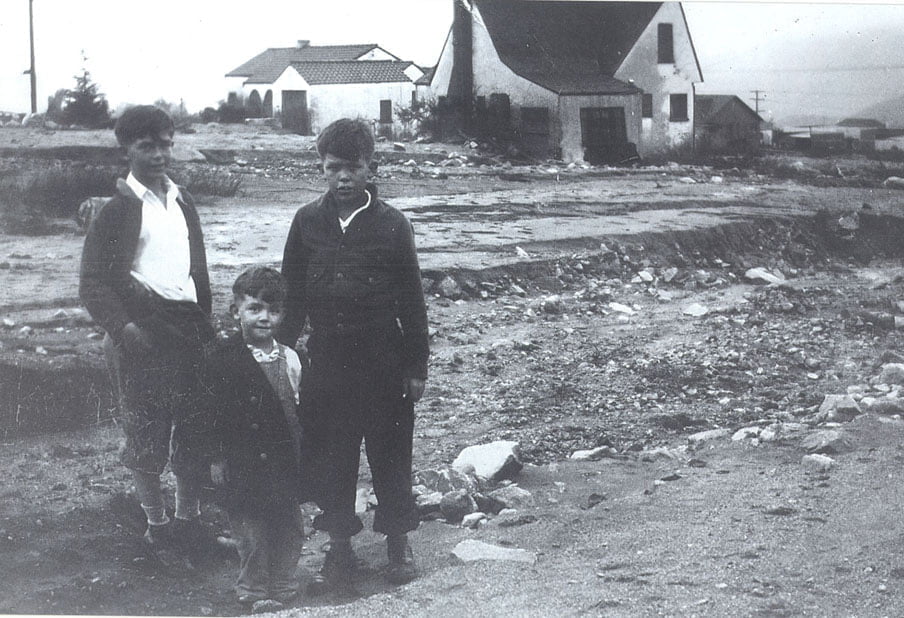
The 3000 block of Prospect Avenue was covered in mud and debris on New Years Day 1934, the day after the lethal New Year’s Eve flood. Bob Crowe, the youngest of the three brothers shown here, had just spent the night up in the attic of their house seen to their right in the background.
By Jason KUROSU
For La Crescenta residents, New Year’s Day is both a day for celebrating the New Year and remembering the disastrous flood of New Year’s Day 1934. At approximately midnight, as families and revelers slept or celebrated, the rains which had fallen throughout the day combined with 700,000 cubic yards of soil to descend upon La Crescenta in a catastrophe that took around 30 lives (records differ on the exact death toll).
Debris flowed freely from the canyons overlooking the foothills, particularly from the Hall Beckley and Pickens canyons, depositing their contents onto a community of 400-500 homes. Close to 300 homes were damaged or destroyed in the process.
“It changed the landscape of the town,” said Mike Lawler, former president of the Historical Society of the Crescenta Valley, referring to both the literal and figurative impact of the flood.
Though some flood prevention measures existed, none were intended for an event of that magnitude.
“We have a much better awareness of our surroundings now,” added Lawler.
CV Historical Society founder Art Cobery covered the flood in his 2012 book, “The Great Crescenta Valley Flood.”
“In fairness to the decision-makers,” Cobery writes, “there was no precedent in their life experience to prepare them for the multiple canyon debris flows of 1934.”
The affected areas comprised a large portion of town, with the Pickens and Hall Beckley canyons, along with the smaller Snover and Webber canyons, blanketing Montrose in debris from La Crescenta Avenue to Ocean View Boulevard.
In memory of the victims of the flood, a memorial was erected at the corner of Rosemont and Fairway avenues, with commemorations held with some of the flood survivors. Though no commemoration will be held this year, Pam Lawler said the events have been educational, particularly hearing the firsthand accounts.
“Of course, the survivors were quite young at the time and many of the stories are told through a kid’s memories,” said Pam, recounting stories whose details have been skewed by time or perspectives unable to grasp the horror surrounding them.
Currently, controversy over flood control measures has risen over the sediment removal project at (corrected Dec. 30) Dunsmore Canyon , in which dump trucks will remove millions of cubic yards of sediment, a practice that residents find not only harmful to the health of nearby residents and wildlife, but also unnecessary.
Whether or not the project is ultimately justified is for history to determine. Cobery, though, is supportive of the project in his book.
“I, for one, salute their efforts and pray for success,” he writes.
